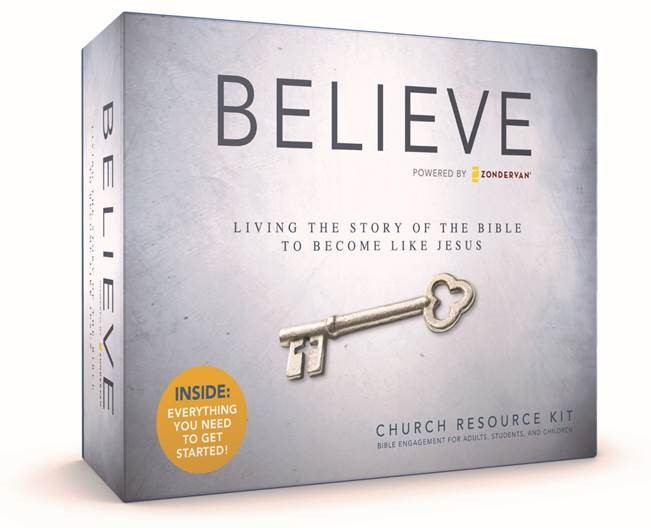This lesson is part of Mel Lawrenz’ “How to Study the Bible” series. If you know someone or a group who would like to follow along on this journey through Scripture, they can get more info and sign up to receive these essays via email here.
Later today I will go to my mailbox, remove its contents, go into the kitchen, and sort the mail. I will be able to tell from the size, packaging, and addresses on the mail which pieces are advertising, bills, and personal mail. This sorting into types helps me discern the value of the different pieces.
There is a large bookstore I frequently visit. I know just where to find histories and biographies, novels and picture books, technical manuals and reference works. Knowing the different genres and where to find them helps me gain what I am looking for.
And when I open the Bible, I know from having studied it for decades whether I am reading a gospel passage, a prophecy, a Psalm, or an epistle. I do not expect Isaiah to lay out the details of the history of Israel as do the books of Kings and Chronicles. I know when I’m studying a Psalm that the forms of a poem or song will help me understand the meaning. And when I read 1 Corinthians I know I’m listening to one side of a two-sided conversation.
One of the most powerful and complex features of the Bible is that it consists of many different types, or genres, of texts.
The major genres of Scripture include the following:
1. Narrative
This includes books of the Bible or sections of books which simply tell the story of what happened. Exodus is an expansive, epic narrative. Ruth focusses on the story of one family. Acts tells the spectacular events of the first generation of Christians, as they were led and inspired by the Holy Spirit. Narrative tells us what happened, according to the purposes of the author. Sometimes there are spiritual lessons from events, and sometimes we are just gaining the context of the history of God’s people.
2. Poetry
This is all of Psalms and sections of other books. The power of poetry comes through the use of vivid figurative language (“As the deer pants for streams of water, so my soul pants for you, my God.” Ps. 42:1.) Also, ideas are repeated, sometimes with the same words, other times with synonyms (synonymous parallelism). The Psalms and other poetic sections of the Bible communicate ideas, but they especially express emotion. They show life in its fullness.
3. Wisdom
Proverbs, Job, and Ecclesiastes are collections of wise sayings meant to shape the moral and ethical lives of their readers. They cover many practical topics. The book of James in the New Testament in many ways is like Proverbs in the Old Testament.
4. Prophecy
The four major prophets (Isaiah, Jeremiah, Ezekiel, Daniel) and the 12 minor prophets (Hosea through Malachi) are all God’s word to his covenant people, warning them and bolstering them during periods of pronounced spiritual and national danger. They are mostly oracles, later written down. We gain spiritual lessons from them about the disposition of God (e.g., disappointed, indignant, sorrowful, tender, caring), and the condition of the people addressed (e.g., frightened, disobedient, humbled, arrogant). We must read Old Testament prophetic books as God’s challenge to the original audiences, and then we apply the lessons to our day.
5. Gospels
Matthew, Mark, Luke, and John are similar to the genres of narrative or biography, but they are more than these. The Gospels are proclamation. The people who wrote them were true believers relating first-hand accounts about the life and teachings of Jesus. And so we read the genre of Gospel as faith documents, announcing a world-changing event centered in the person of Jesus. (The teachings of Jesus we know as parables are their own genre. These unique stories communicate lessons embedded in extended similes and metaphors.)
6. Epistles
The letters of the New Testament were communications to specific individuals or groups for specific and varied purposes. The apostle Paul meant Romans to be an overarching description of Christian faith, whereas 1 Corinthians was occasioned by problems, including a list of questions they had for Paul (“now concerning the matters you wrote about,” 1 Cor. 7:1), and the letters to Timothy were to encourage and guide a younger church leader in a challenging spot. Epistles are “occasioned” texts, and so we need to get at the circumstances that led to them being written.
7. Apocalypse
The book of Revelation and parts of the book of Daniel are revelations. Like other prophecies, they proclaim urgent messages to their original audiences, in particular, warning and comfort. To a greater degree than other prophetic books, they employ much symbolic language, which can be understood by studying preceding similar expressions in Scripture.
When we sit down to study the Bible we recognize what genre we are looking at in order to gain a head start in getting at the meaning. If we don’t account for genre we will certainly misunderstand and misapply the truth of God’s word. Genres also show how God’s word is wide and varied and deep, and worthy of a lifetime of study.
Mel Lawrenz trains an international network of Christian leaders, ministry pioneers, and thought-leaders. He served as senior pastor of Elmbrook Church in Brookfield, Wisconsin, for ten years and now serves as Elmbrook’s minister at large. He has a Ph.D. in the history of Christian thought and is on the adjunct faculty of Trinity International University. Mel is the author of 18 books, the latest, How to Understand the Bible—A Simple Guide and Spiritual Influence: the Hidden Power Behind Leadership (Zondervan, 2012). See more of Mel’s writing at WordWay.







 Happy Leap Day! According to Wikipedia: “February 29, also known as leap day or leap year in the Gregorian calendar, is a date that occurs in most years that are divisible by 4, such as 2008, 2012, 2016, 2020, and 2024…. A leap day is observed because a complete revolution around the Sun takes slightly longer than 365 days. It compensates for this lag, realigning the calendar with the Earth’s position in the solar system; otherwise, seasons would occur in a different time than intended in the calendar year.”
Happy Leap Day! According to Wikipedia: “February 29, also known as leap day or leap year in the Gregorian calendar, is a date that occurs in most years that are divisible by 4, such as 2008, 2012, 2016, 2020, and 2024…. A leap day is observed because a complete revolution around the Sun takes slightly longer than 365 days. It compensates for this lag, realigning the calendar with the Earth’s position in the solar system; otherwise, seasons would occur in a different time than intended in the calendar year.”

 A year ago today, the world lost a remarkable minister of the Gospel to a tragic car accident. This man had ministered to countless thousands of people in the course of his career, introducing many to the saving message of Jesus Christ for the first time, and encouraging many others in their everyday faith. Yet this man wasn’t a famous pastor at the helm of a megachurch, nor was he the author of bestselling books about Christianity. In fact, many of the people to whom he ministered every day—and you might be one of them—may not even have ever known his name!
A year ago today, the world lost a remarkable minister of the Gospel to a tragic car accident. This man had ministered to countless thousands of people in the course of his career, introducing many to the saving message of Jesus Christ for the first time, and encouraging many others in their everyday faith. Yet this man wasn’t a famous pastor at the helm of a megachurch, nor was he the author of bestselling books about Christianity. In fact, many of the people to whom he ministered every day—and you might be one of them—may not even have ever known his name!


How to Use Bible Commentaries
This lesson is part of Mel Lawrenz’ “How to Study the Bible” series. If you know someone or a group who would like to follow along on this journey through Scripture, they can get more info and sign up to receive these essays via email here.
One day God prompted the apostle Philip to approach a man riding in a chariot along a desert road that went from Jerusalem to Gaza. In the chariot was a dignitary from faraway Ethiopia who was reading aloud from the prophet Isaiah. “Do you understand what you are reading?” Philip asked. The response: “How can I, unless someone explains it to me?”
The man happened to have been reading one of the great prophecies about the coming of Christ and his suffering, and Philip had the privilege of telling the Ethiopian finance minister the good news about Jesus. In that moment, Philip was a kind of commentary for a man who simply needed help with the historical and linguistic meanings of the text of Isaiah.
Serious Bible study will always involve reading the insights we gain from commentaries on the Bible. There are different kinds of commentaries for different purposes, and we ought to use them at select times in the process of study, but the use of commentaries is essential. This takes nothing away from the principle that the individual believer should be able to read the biblical text in a natural and sensible way, and derive direct understanding of the text. This is essential so that we have a direct relationship with God’s word and so that we are directly influenced by its truth and power.
But the reading, understanding, and application of biblical truth have always been functions of the Christian community. The words of the prophets and apostles were directed at God’s people (plural) at the start, and must be a community endeavor now. That is why we do personal Bible study, but we engage with others in Bible studies in homes and office buildings and schools and churches.
A Bible commentary is an explanation of the biblical text by someone (usually a scholar) who has immersed himself or herself in the language, context, and form of biblical texts. The Bible commentator delivers to us details that we simply don’t have by the simple reading of Scripture, like archaeological discoveries, historical details, linguistic particularities, and details about geography and culture.
1. What kinds of commentaries are there? That depends on your purpose. Here are some different types of commentaries:
Critical, technical, and exegetical commentaries are the most detailed. They exhaustively go through all the details, including comments on the Hebrew, Aramaic, and Greek words of the text. They are best used by people who know the biblical languages.
Expository commentaries are written to help people who regularly teach or preach from Scripture, though they are very helpful for any serious student of the Bible. They go passage by passage, sentence by sentence, explaining the background and meaning, but expository commentaries go one step further in describing how the meaning of the text may be applied in real life.
Devotional commentaries spend little time on the details of biblical passages and instead go straight to spiritual meaning and life application.
Note also that there is a big difference between one-volume commentaries on the whole Bible, which naturally are limited, and commentaries devoted to single books of the Bible.
2. How should you choose what commentaries to use? When we’re doing in-depth study of biblical passages, we should read two or three or more commentaries, making notes as we read. We will quickly see where the commentators agree on the meaning and the emphases of texts, and we will gather numerous details not obvious with the simple reading of the text. When it comes to choosing which specific commentaries to use, we note the type of commentary suited to our purpose (above). Then, we should note the theological assumptions of the commentators. Some scholars look at the Bible simply as one more human text, and they analyze it on purely linguistic and historical bases. On the other hand, scholars who believe in the divine inspiration and unique character of Scripture will take things like miracles and the resurrection of Christ as historical realities, and will look for the cohesive themes of the revelation of God in Holy Scripture. Commentaries in the evangelical tradition, for instance, can be located by looking at the offerings of the mainstream evangelical publishers: Baker, Zondervan, InterVarsity Press, and many others.
When the Ethiopian in the chariot said, “How can I [understand Isaiah], unless someone explains it to me?” he displayed the curiosity and teachability that is essential for all followers of Jesus. We are blessed today with many experts who have done diligent study to help us out as we search the meaning of the Scriptures.
Some recommended commentaries:
Mel Lawrenz trains an international network of Christian leaders, ministry pioneers, and thought-leaders. He served as senior pastor of Elmbrook Church in Brookfield, Wisconsin, for ten years and now serves as Elmbrook’s minister at large. He has a Ph.D. in the history of Christian thought and is on the adjunct faculty of Trinity International University. Mel is the author of 18 books, the latest, How to Understand the Bible—A Simple Guide and Spiritual Influence: the Hidden Power Behind Leadership (Zondervan, 2012). See more of Mel’s writing at WordWay.